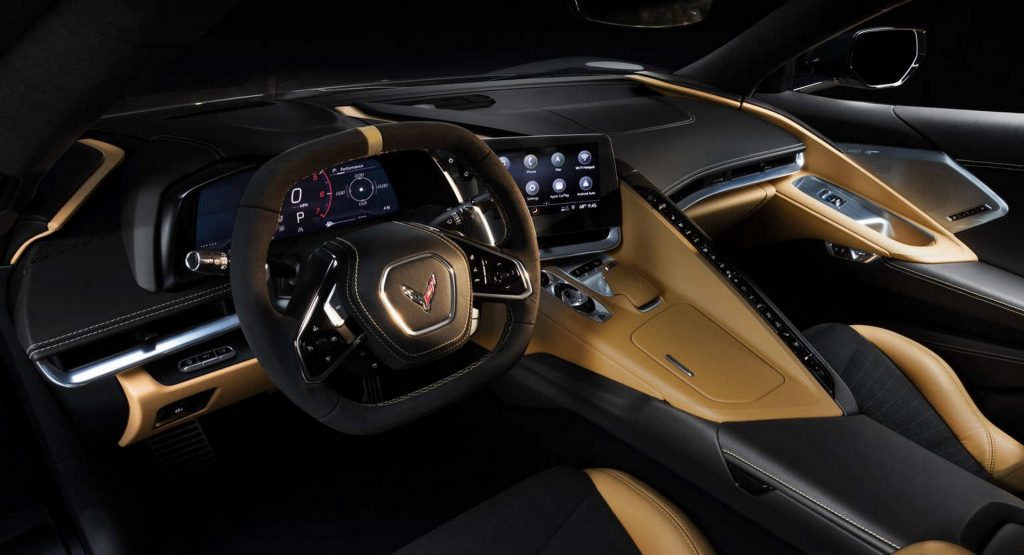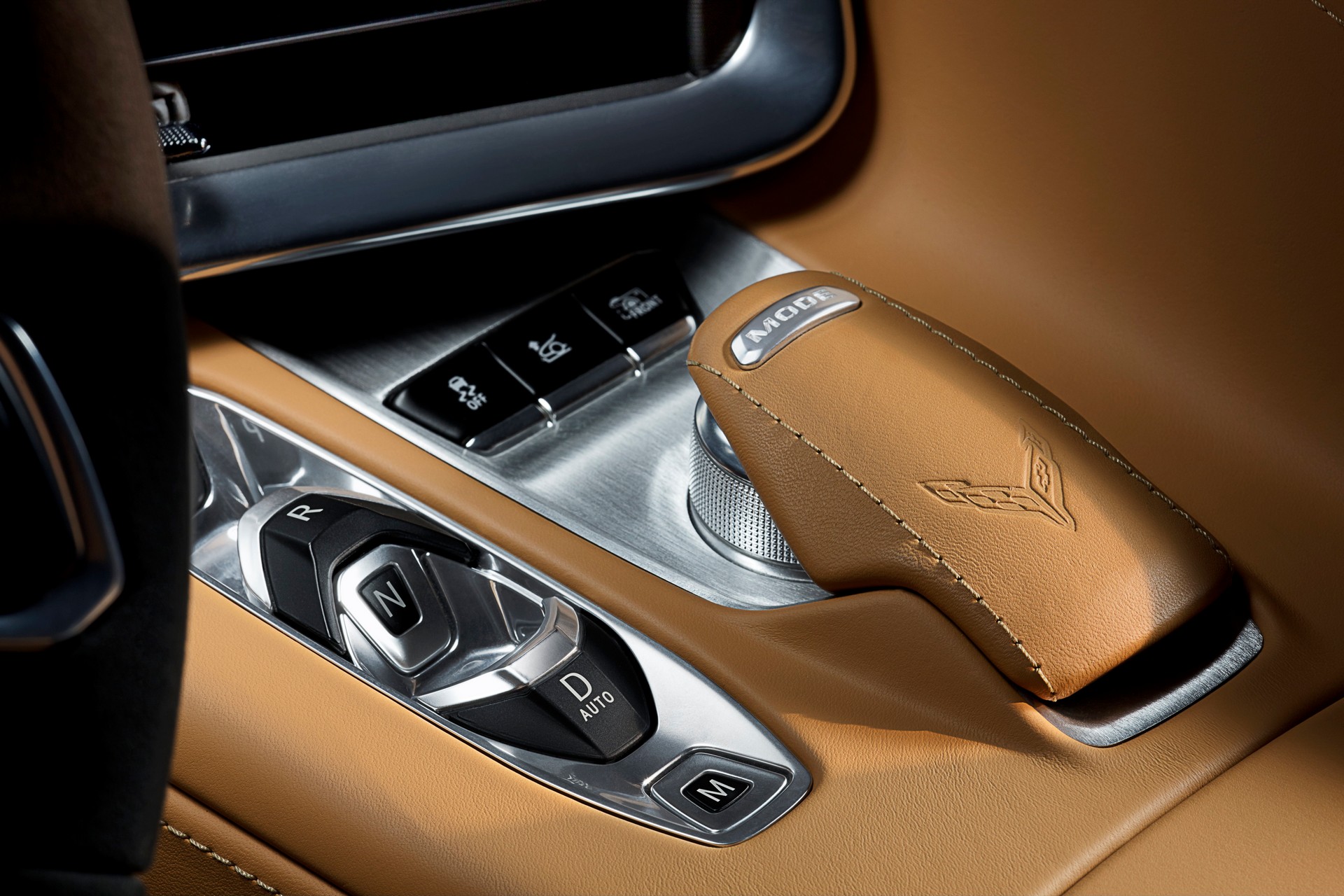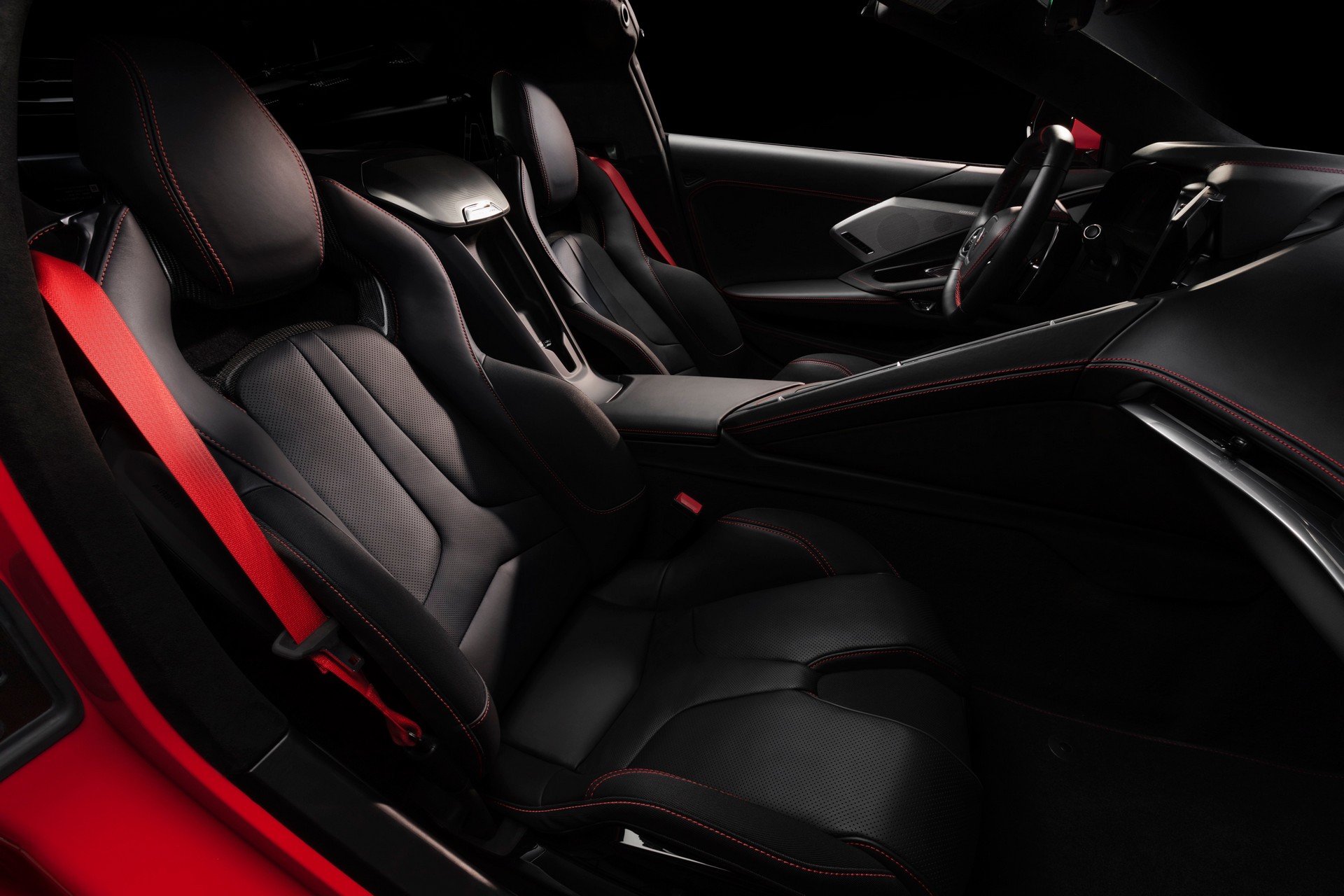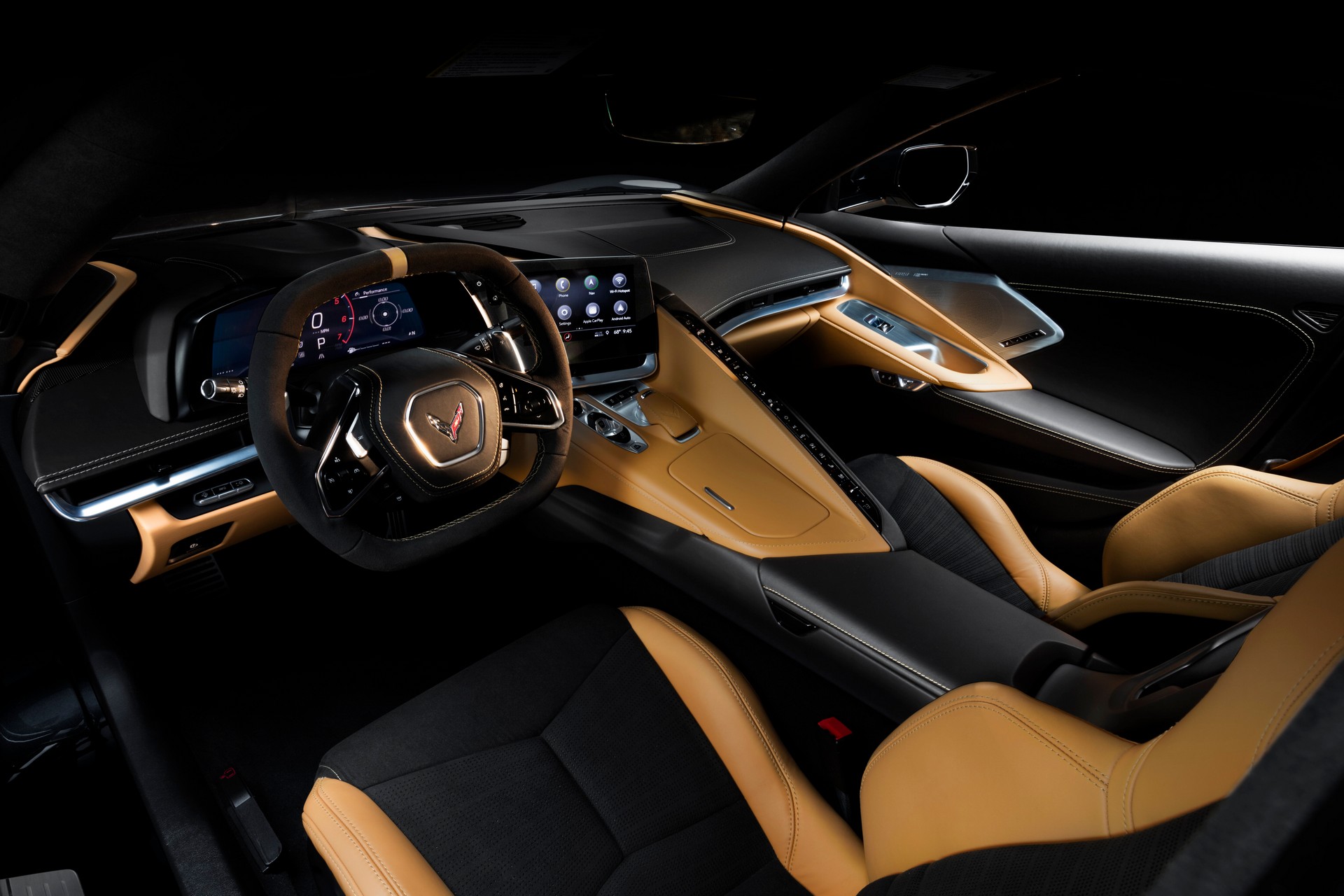Was the 2020 Corvette Stingray one of the most eagerly awaited debuts of the year? Well, is the Pope Catholic? Of course it was, mainly because it was the first-ever to adopt a mid-engined layout, which was a radical departure and a rather brave decision on GM’s part.
The fact that, in Coupe form, it starts at under $60k makes it a bargain and has fans salivating – plus, customers most likely lining up to get their hands on one. Its styling, however, has been the subject of some debate; and while we can’t talk about the exterior, we now have a very good idea about why the cabin was designed that way.
Sure, the digital instrument cluster is pretty much a given these days, as is the big infotainment screen. That huge central divider, though, with its array of controls lined up, did seem a bit strange, as everything was aimed at the driver, leaving the passenger a bit disconnected. As it turns out, this was intentional and, in a form follows function kind of way, dictated by the engine layout!
Also Read: 2020 Corvette Stingray Delivers Unbelievable Numbers On The Dyno
Interior design manager Tristan Murphy told Gear Patrol that, right from the start, they wanted the C8 Corvette to have a very low dashboard.
“The whole point of [getting] that engine behind you is it allows you to have a much lower cowl…you no longer have to sit above the engine, and you can get these really great sightlines”, Murphy explained. “And that’s what a mid-engine car does. The last thing we want to do was have this amazing downvision, then have this typical tall instrument panel. It was about, how do we change the game and how do we reconstruct a dashboard here to be as low and as thin as possible? That was the mission statement of the whole car.”
Thus, Murphy and his team discussed how they could keep the dashboard as low as they could and in which way they should arrange all the controls. Keeping them in the center console was not an option; in a car like the 2020 Toyota Supra, for example, the HVAC controls are about 30 mm tall, the audio ones add an extra 15-20 mm, and then of course there’s the infotainment.
One option was to integrate them into the touchscreen, a solution used by a number of other manufacturers, but according to Murphy, that works because most have portrait-oriented displays, which are tall, and that wouldn’t do. They had to find some other way to make it work.
“How do we remove off the center line and still have some hard controls? And that’s when we went to looking back at jet cockpits. These guys literally have controls wrapping around them.”
So, now we know why the 2020 Corvette Stingray’s cabin looks the way it does: fighter jets. Not a bad inspiration for a supercar, if you ask us.









